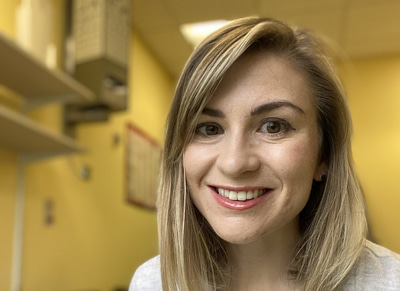- OT
- Life in practice
- Practitioner stories
- The Pentacam
I could not live without…
The Pentacam
Emma Bolger, specialist optometrist at University Hospitals Birmingham, on why this stalwart piece of tech is still her most invaluable diagnostic tool

Emma Bolger
05 February 2021
In my work as a hospital optometrist, the piece of kit I couldn’t live without is the Pentacam. This well-established technology, which is almost 20 years old, is still proving to be an essential diagnostic tool, especially in the keratoconus clinic I am involved with at the hospital.
The keratoconus clinic helps to diagnose and manage those with keratoconus or other corneal ectasias. Confirming such corneal conditions requires a range of diagnostic tests including keratometry, pachymetry, visual acuities and slit lamp examination. Whilst there are pieces of equipment that support all of these individually, some of these measurements can be obtained simultaneously and more accurately with the use of the Pentacam.
The topographical map of elevation of both the anterior and posterior surface of the cornea from the Pentacam provides us with a better understanding of the immediate anterior portion of the eye. In relation to the work within the keratoconus clinic, this may help influence any further management of the patient, such as helping us to decide if they are suitable for treatment such as collagen cross linking, or if they would be an appropriate candidate for contact lens fitting. Topography of the front and back corneal surface can also help us to determine which surface is responsible for the change in corneal shape and the resulting effect on patient’s vision and so can assist the practitioner in being able to discuss the patient’s visual symptoms more effectively.
The Pentacam is invaluable to me
Whilst there is much more to analyse from a Pentacam result, the topography maps are also an incredibly effective and straightforward way of explaining corneal steepness to a patient and the resulting visual effects they may be experiencing. Topography maps from the Pentacam can also map out areas of corneal astigmatism and so can help us to separate those patients that may have a changing astigmatic prescription due to refractive error from those that have a changing prescription due to changing corneal shape.
Keratometry measurements are also provided by the Pentacam. For those patients that are seen in the keratoconus clinic, with a view to being referred for complex contact lens fitting rather than other types of treatment, these keratometry readings provide us with accuratesteepest and flattest K readings, which provide a starting point to commence lens fitting. Using the K readings from the Pentacam also reduces our clinic time in the subsequent contact lens fitting appointment.
The pachymetry results we are able to record from the Pentacam are essential in the keratoconus clinic for diagnosing a thin cornea or one that is becoming progressively thinner with time. Pachymetry measurements from the Pentacam are very useful as it negates the need to use a hand held pachymeter and so reduces the need for patient contact and for using any topical anaesthesia. This is especially important in our new working environments and beneficial in reducing our patient contact and reducing their chair time. This is also a far more comfortable way to assess corneal thickness for our patients. This can be especially important for keratoconus suspect patients as they may often present with dry, itchy, gritty eyes or atopy that involves the lids/lashes and skin around the eyes, which can make sitting still for a contact based pachymetry procedure much more challenging.

Moreover, pachymetry readings from the Pentacam give us positions of thickest and thinnest loci as well as plotting a colour map of corneal thickness. This can be particularly insightful in the event that the topography map shows a normal cornea; an unusually thin cornea may reveal some early forme fustre keratoconus or a corneal ectasia that could potentially progress further down the line. This can help the practitioner in deciding how appropriate it is to follow up with the patient or how often.
While there are numerous applications to the Pentacam across both the hospital setting and community practise, especially in its uses in the event a patient is considering refractive laser surgery, the primary application of the Pentacam in our hospital clinic is to identify those at risk of developing a progressing corneal ectasia and helping to manage them thereafter. For this purpose, the Pentacam is invaluable to me.
Advertisement

Comments (0)
You must be logged in to join the discussion. Log in